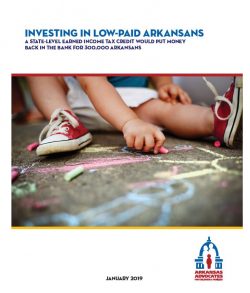
A Working Families Tax Credit could become the hero of poverty-reduction tools for Arkansans. It encourages people to work — you can only get the credit if you’ve worked and earned wages. And the amount of the credit increases up to a certain income level, encouraging workers to maintain their employment and strive for higher-paying positions. Low-wage workers with children receive higher credits, to reflect the additional costs that come with raising children in the home. Once the taxpayer reaches the cutoff and is earning a self-sufficient wage, the credit phases out, because it is no longer needed.
At the federal level, it’s called the Earned Income Tax Credit (EITC).
President Ronald Reagan proposed the expansion of the EITC in the Tax Reform Act of 1986, which Congress later went on to further increase. Expansions of the tax credit in the 1990s did more to increase employment and reduce welfare caseloads among single mothers than either welfare reform or the substantially improving economy.
The federal EITC is so successful at investing in working families and putting money back into local economies, 29 states plus the District of Columbia have adopted their own state-level versions.
Around 300,000 working Arkansans, many of whom are parents with children at home, would qualify for a Working Families Tax Credit, and almost $40 million would return to Arkansas’s economy.
Considering one in four Arkansas kids live in poverty, the time has come for Arkansas to adopt a Working Families Tax Credit.
Learn more about how the tax credit works by downloading the document below.
